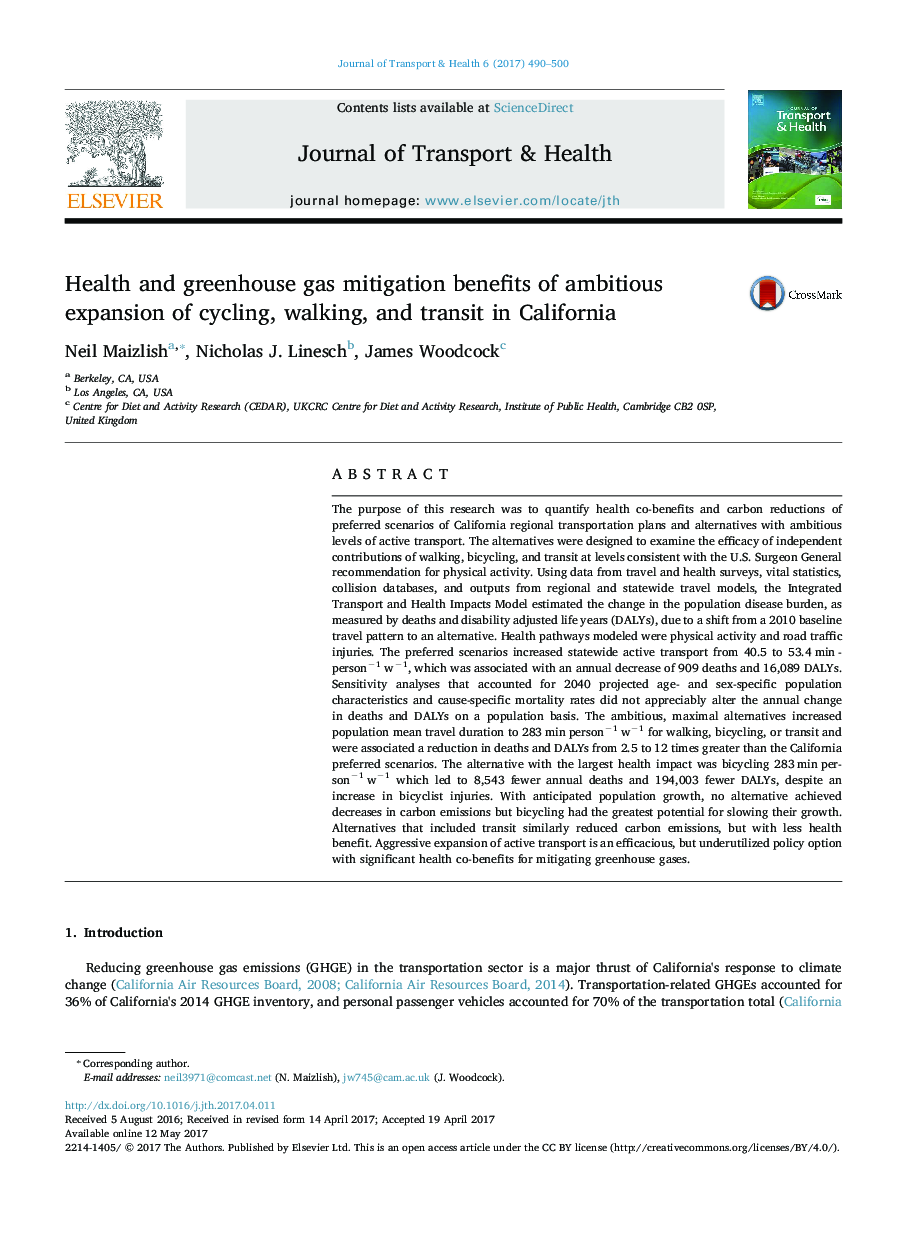| کد مقاله | کد نشریه | سال انتشار | مقاله انگلیسی | نسخه تمام متن |
|---|---|---|---|---|
| 5117685 | 1485455 | 2017 | 11 صفحه PDF | دانلود رایگان |
- A model estimated health co-benefits and carbon reductions for active transport.
- Health pathways modeled were physical activity and road traffic injuries.
- Scenarios evaluated increased walking, bicycling, or transit to meet health goals.
- Active transportation contributed to significant reductions in disease and injuries.
- Health benefits of official planning scenarios were an order of magnitude lower than optimum.
- Bicycling generated the greatest health benefit per ton of carbon avoided.
The purpose of this research was to quantify health co-benefits and carbon reductions of preferred scenarios of California regional transportation plans and alternatives with ambitious levels of active transport. The alternatives were designed to examine the efficacy of independent contributions of walking, bicycling, and transit at levels consistent with the U.S. Surgeon General recommendation for physical activity. Using data from travel and health surveys, vital statistics, collision databases, and outputs from regional and statewide travel models, the Integrated Transport and Health Impacts Model estimated the change in the population disease burden, as measured by deaths and disability adjusted life years (DALYs), due to a shift from a 2010 baseline travel pattern to an alternative. Health pathways modeled were physical activity and road traffic injuries. The preferred scenarios increased statewide active transport from 40.5 to 53.4 min personâ1 wâ1, which was associated with an annual decrease of 909 deaths and 16,089 DALYs. Sensitivity analyses that accounted for 2040 projected age- and sex-specific population characteristics and cause-specific mortality rates did not appreciably alter the annual change in deaths and DALYs on a population basis. The ambitious, maximal alternatives increased population mean travel duration to 283 min personâ1 wâ1 for walking, bicycling, or transit and were associated a reduction in deaths and DALYs from 2.5 to 12 times greater than the California preferred scenarios. The alternative with the largest health impact was bicycling 283 min personâ1 wâ1 which led to 8,543 fewer annual deaths and 194,003 fewer DALYs, despite an increase in bicyclist injuries. With anticipated population growth, no alternative achieved decreases in carbon emissions but bicycling had the greatest potential for slowing their growth. Alternatives that included transit similarly reduced carbon emissions, but with less health benefit. Aggressive expansion of active transport is an efficacious, but underutilized policy option with significant health co-benefits for mitigating greenhouse gases.
Journal: Journal of Transport & Health - Volume 6, September 2017, Pages 490-500
